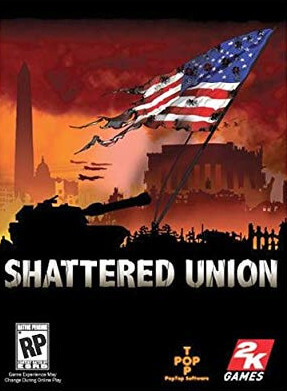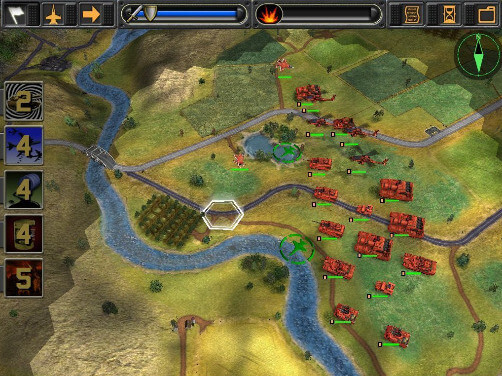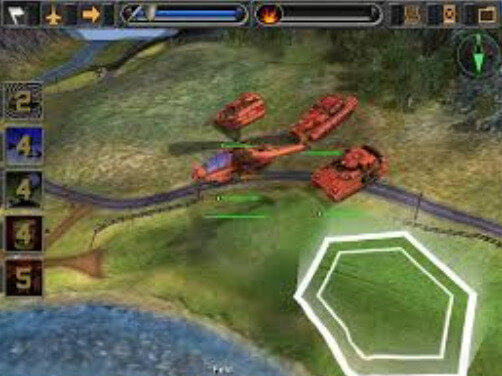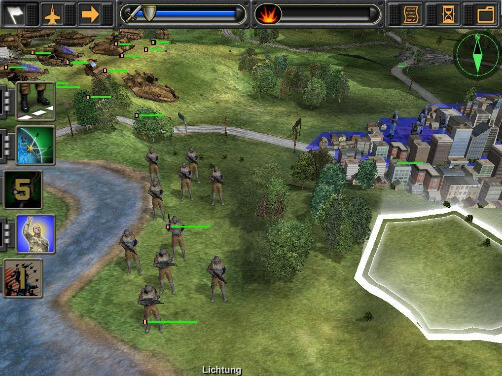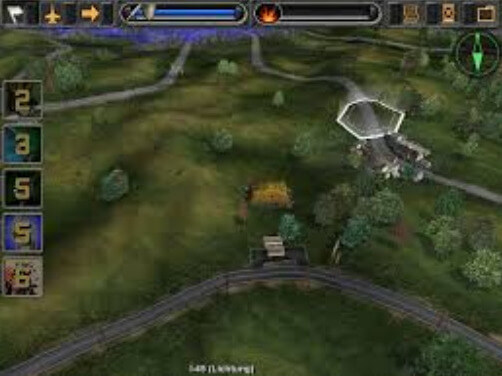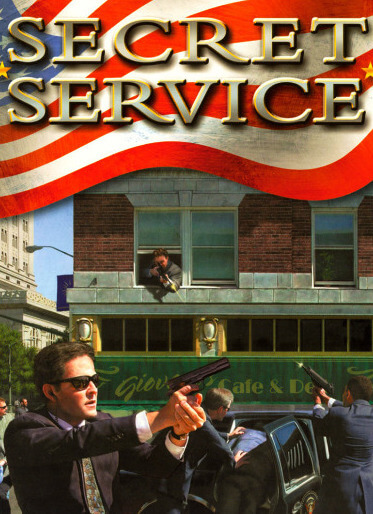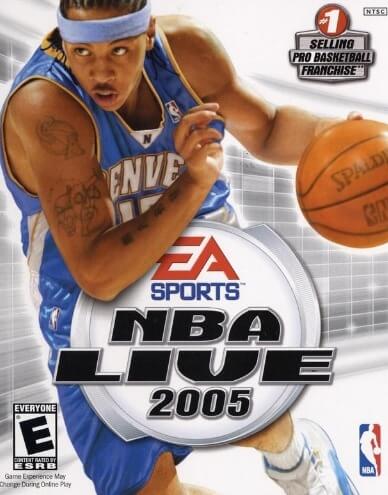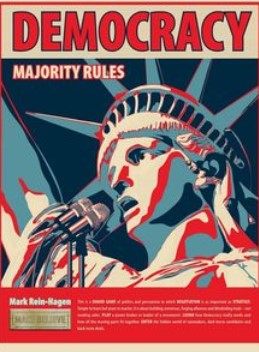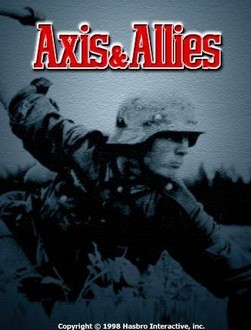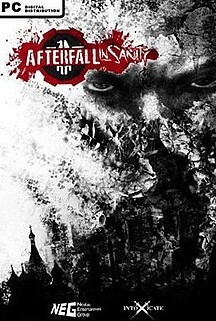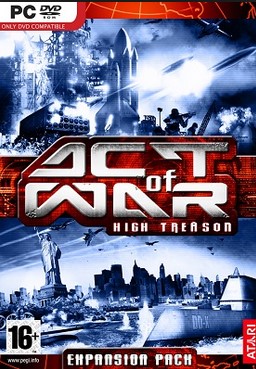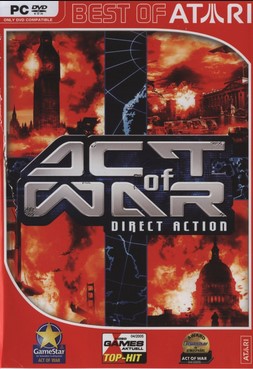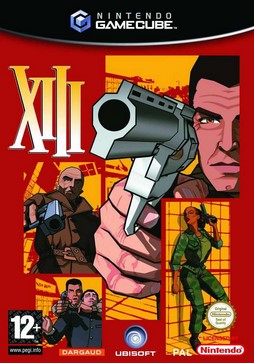The European Union Parliament meets in an emergency session, and votes to send peacekeepers to the Washington Metropolitan Area to secure international interests and protection of European citizens in the United States. As secessionist sentiment rises in America, the governor of California declares home rule, and California secedes from the Union on April 15, 2013. Texas follows a few days later on April 17, 2013, taking neighboring states with it and re-forming the Republic of Texas. Other factions form in the following months, and by 2014, all hopes for a peaceful resolution are gone and the Second American Civil War begins.
Early in the war, Russia invades and occupies Alaska, using the expanded operations of the European Union as an excuse. The invasion is personally led by President Nicholai Vladekov, an ex-general and former Soviet hardliner, who claims that Alaska was never really part of the United States, and that Russia is merely reclaiming its former territory. What little resistance does occur is confused and disorganized, making the invasion largely unopposed.
Later, Interpol reveals the results of its investigation regarding the Inauguration Day bombing. President Vladekov had been dealing weapons on the black market for more nearly thirty years, and masterminded the D.C. bombing as part of his goal to disrupt the world economy, so that Russia could regain its military dominance, and more easily control Europe. Protests throughout Russia force Vladekov to declare martial law in Moscow.
After the former contiguous United States is unified under one faction, the independent Commonwealth of Hawaii agrees to join the new government. Vladekov refuses to cede control of Alaska, so the faction's forces prepare to invade the state and drive the Russians out of North America. A closing cinematic depicts the aftermath of the war.
If the invasion fails, the reunified U.S. is still suffering unrest and faces an uncertain future. If the invasion succeeds and the player faction's reputation is very good, the troubled American states are "united again under uncommon greatness" – a leader whose merciful acts and strategic and tactical brilliance will be spoken of for centuries to come. If the player faction's reputation is very bad, the U.S. transforms into a new fascist state, "one that will never again feel the sting of dissent".
Gameplay
The game is based on a hex grid system. The various factions left over when the country broke apart (see below) wage warfare in numerous territories. The amount of income the player gets each round of attacks is based on how many territories he controls. When attacking a territory, the player selects which of his units to deploy to that area on the Deployment screen. If a unit is deployed to one area, it cannot be redeployed to another until that round of attacks is over. Each side can choose to either manually place their units on the battlefield where they want them to be, or have the computer do it for them automatically, with the Manual and Auto buttons on the deployment screen.
In each area there are various forms of terrain, each with its own effect on how a unit moves. Roads enable much faster movement, but decrease the unit's defense score. Forests, mountains, swamps, and other such terrain greatly decrease unit movement, but most increase defense. Cities do not have much of an effect on a unit's movement (unless a road runs through it, in which case it is increased), but increase the unit's defense. If not crossed by a bridge, rivers heavily hinder unit movement, slowing down infantry, requiring a whole day (turn) to cross for some vehicle units, and completely blocking other units, which must search for an intact bridge. Two units, enemy or allied, can never occupy the same hex at once.
Combat itself takes the form of one unit directly engaging another, without outside interference from any other units which might be in the area. The attacking unit always fires first. If the defending unit is still alive following the first strike, it will retaliate against the attacking unit. Each unit can only attack once per turn and retaliate once per turn, unless a sidebar power enables another attack. Air attacks are always retaliated against, provided that the unit has an anti-air score and will not get killed by the air unit's attack first.
Each unit type has three statistics for attacking: effectiveness against infantry (EI), effectiveness against vehicles (EV), and effectiveness against air units (EA). If the attacker's effectiveness stat against the unit type of the defender is higher than the defender's armor rating, damage will be done according to Attacker Effectiveness # - Defender Armor #. If not, no damage or extremely low damage will be done. Some units are specialized to only be able to attack a single type of unit. If enough damage is done to a unit, it will be destroyed.
The objective of the battle is either to destroy all the enemy's units or capture enough objective towns to control the battlefield. Objective towns can be identified for both their Objective Point worth and position on the Map screen, and can be made visible on the main battle screen using the Objective button (flag).
On the left side of the screen are the Sidebar Powers. These powers recharge over time, and the amount of time until they are usable again is shown over their picture/button. In the campaign, depending on his political rating (judged by how much Collateral Damage (see below) he inflicts), the player will get more powers of varying type.
